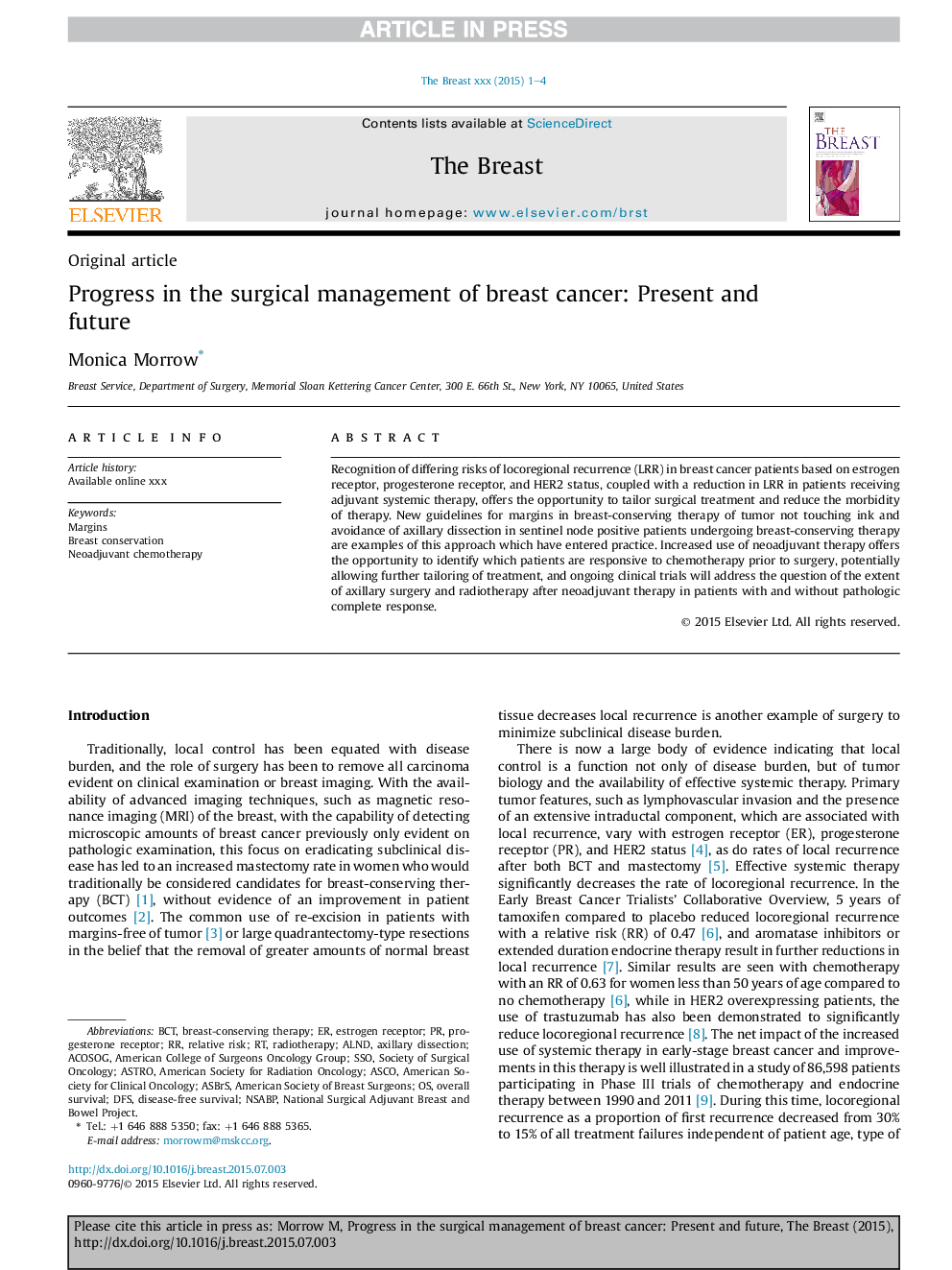| Article ID | Journal | Published Year | Pages | File Type |
|---|---|---|---|---|
| 6169751 | The Breast | 2015 | 4 Pages |
Abstract
Recognition of differing risks of locoregional recurrence (LRR) in breast cancer patients based on estrogen receptor, progesterone receptor, and HER2 status, coupled with a reduction in LRR in patients receiving adjuvant systemic therapy, offers the opportunity to tailor surgical treatment and reduce the morbidity of therapy. New guidelines for margins in breast-conserving therapy of tumor not touching ink and avoidance of axillary dissection in sentinel node positive patients undergoing breast-conserving therapy are examples of this approach which have entered practice. Increased use of neoadjuvant therapy offers the opportunity to identify which patients are responsive to chemotherapy prior to surgery, potentially allowing further tailoring of treatment, and ongoing clinical trials will address the question of the extent of axillary surgery and radiotherapy after neoadjuvant therapy in patients with and without pathologic complete response.
Keywords
American Society for Radiation OncologyNSABPSSODFSASTROASCOACOSOGBCTALNDdisease-free survivaloverall survivalAxillary dissectionMarginsBreast conservationRelative riskBreast-conserving therapyRadiotherapyNeoadjuvant chemotherapyNational Surgical Adjuvant Breast and Bowel ProjectAmerican College of Surgeons Oncology GroupEstrogen receptorProgesterone receptor
Related Topics
Health Sciences
Medicine and Dentistry
Obstetrics, Gynecology and Women's Health
Authors
Monica Morrow,
